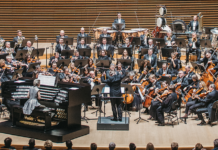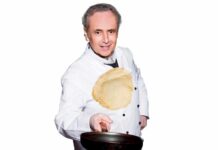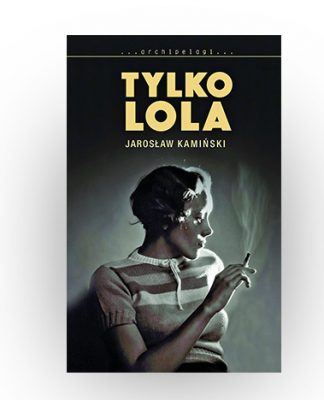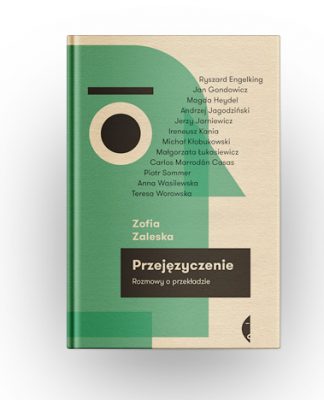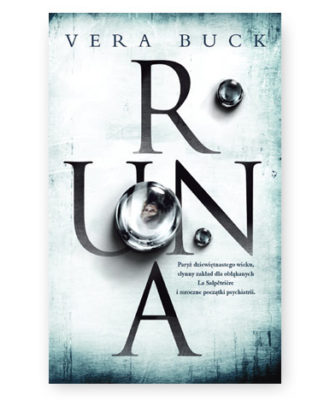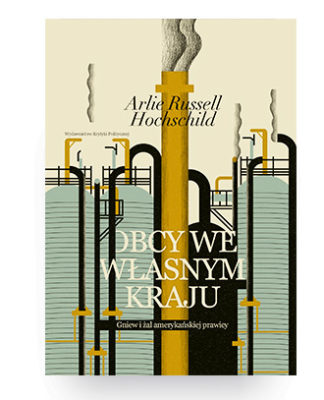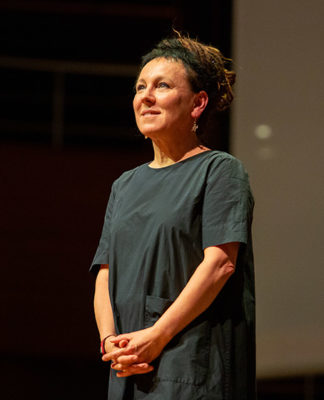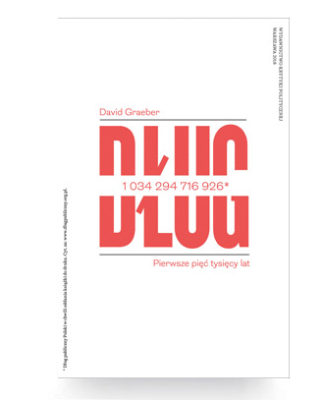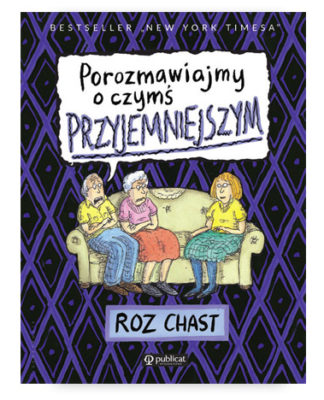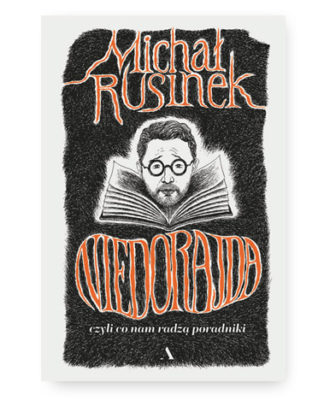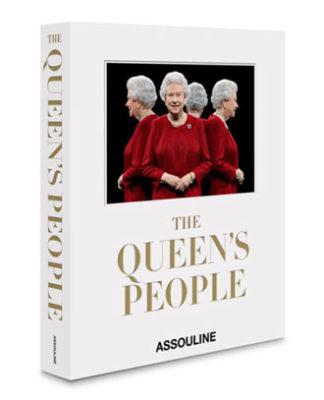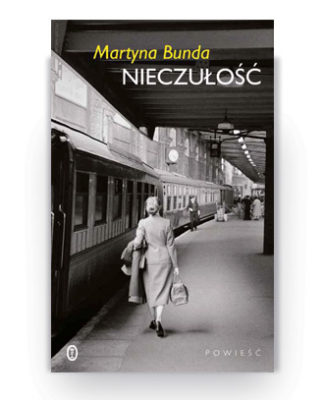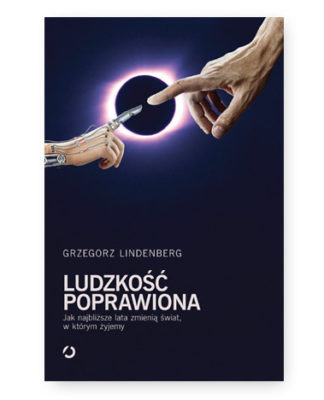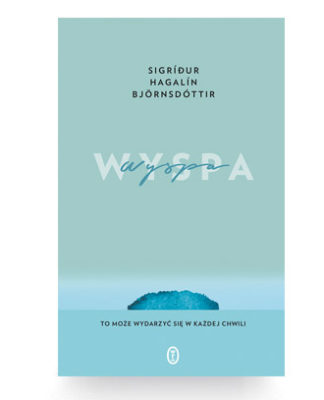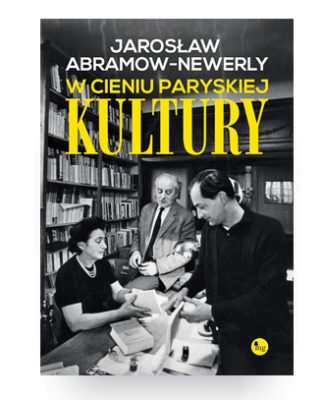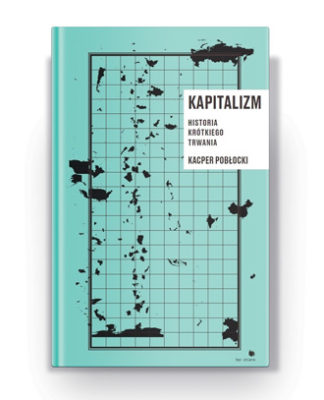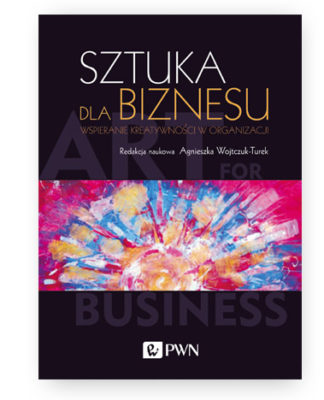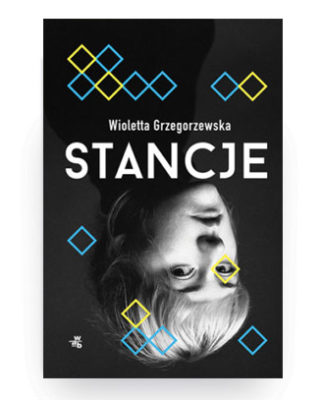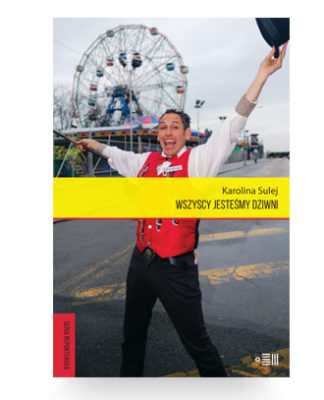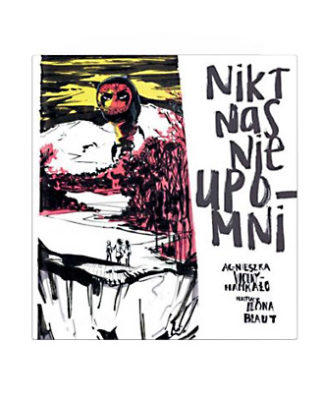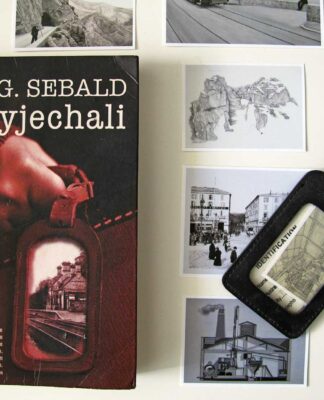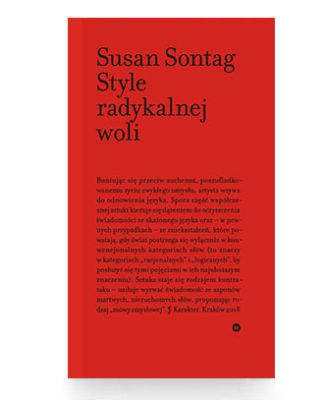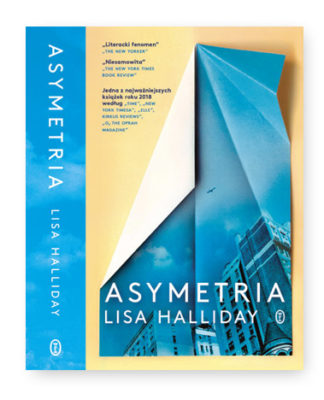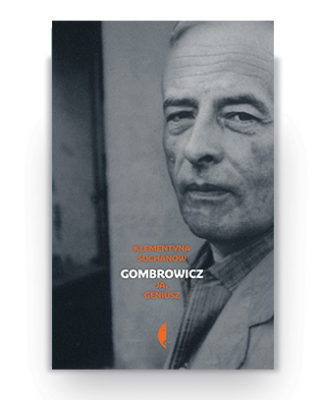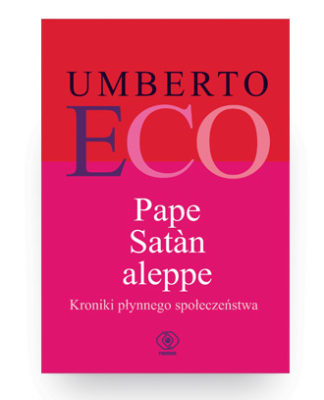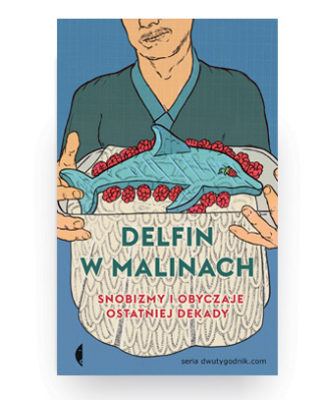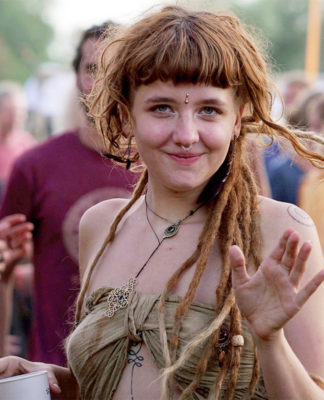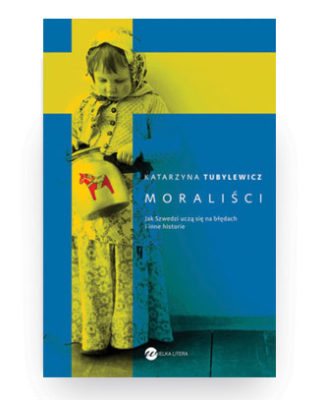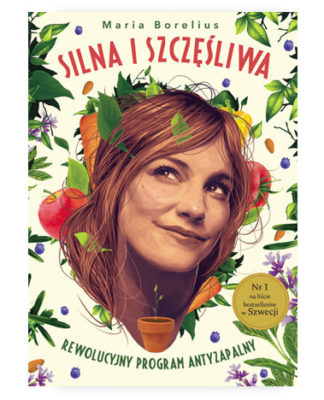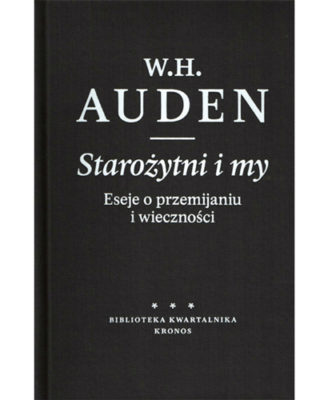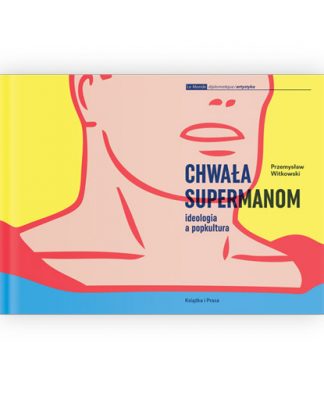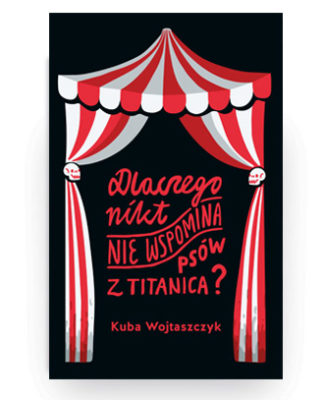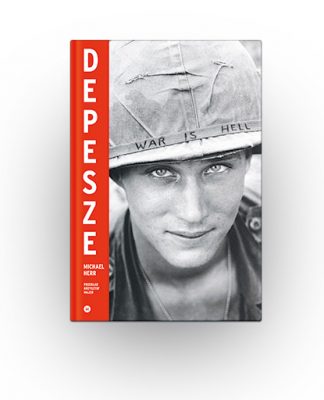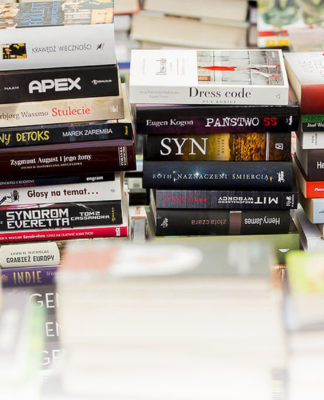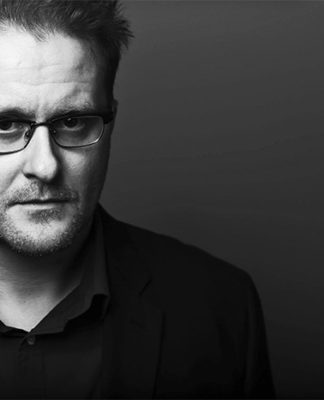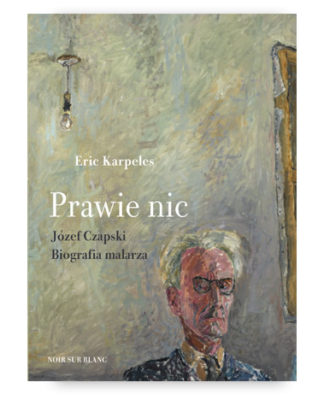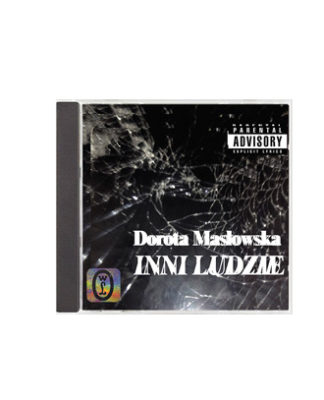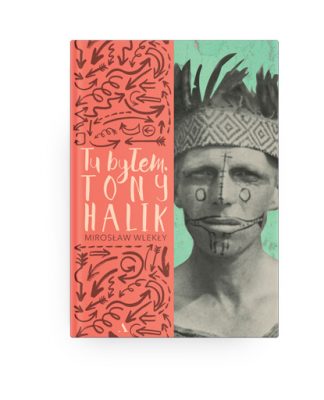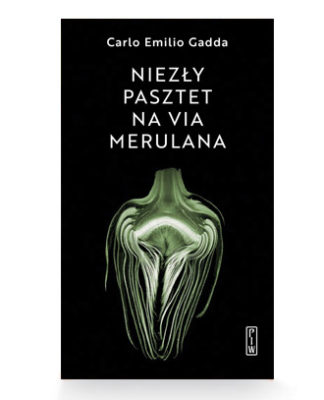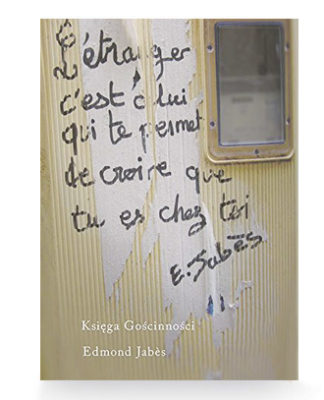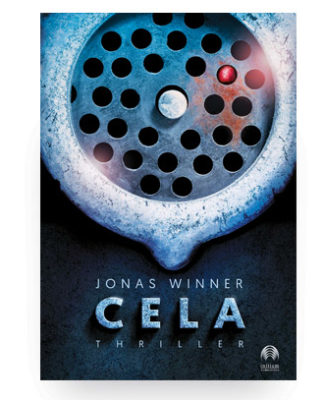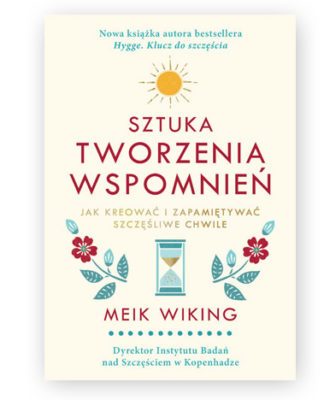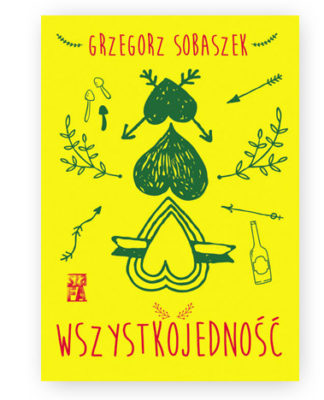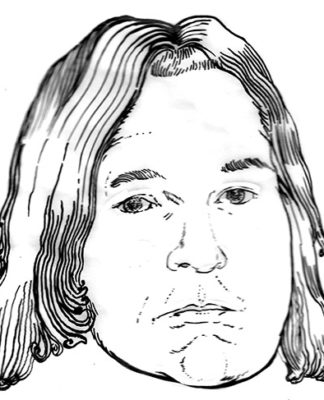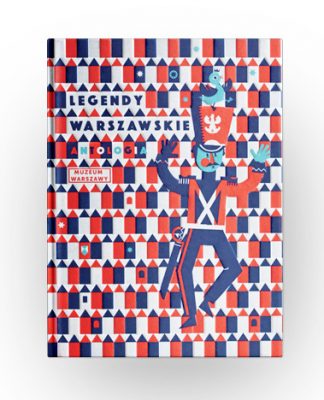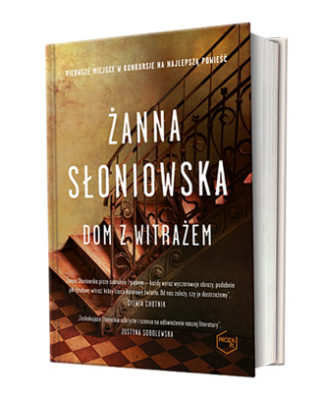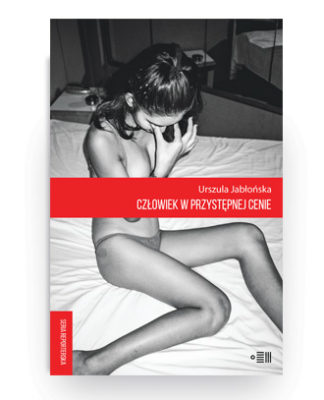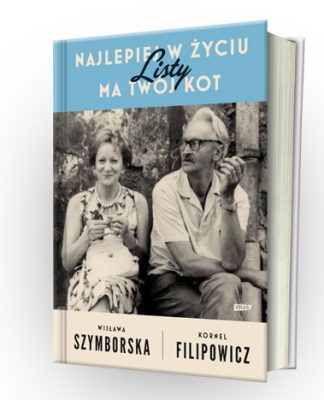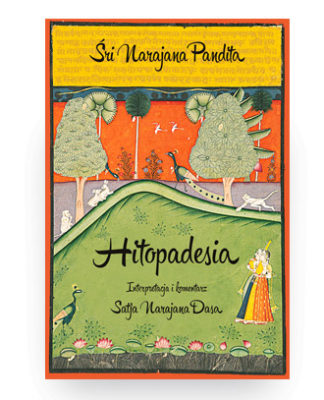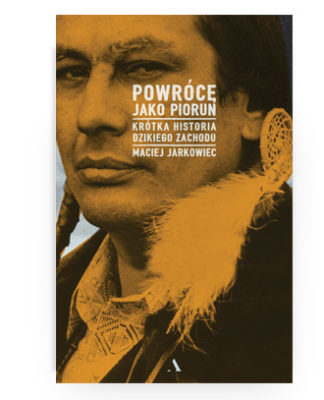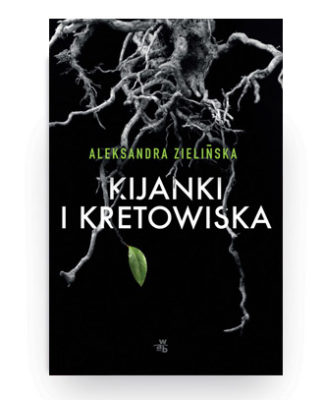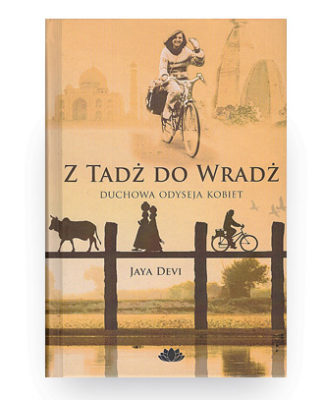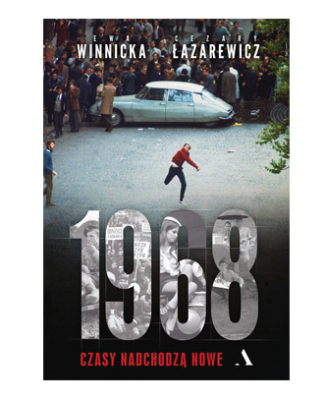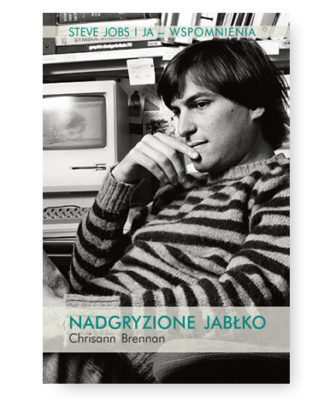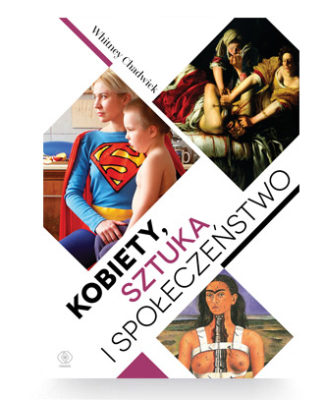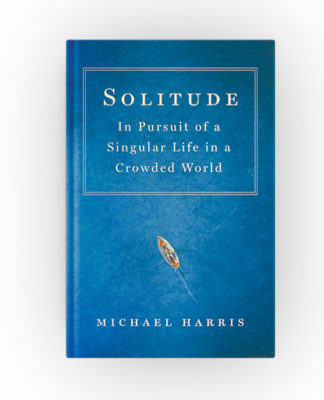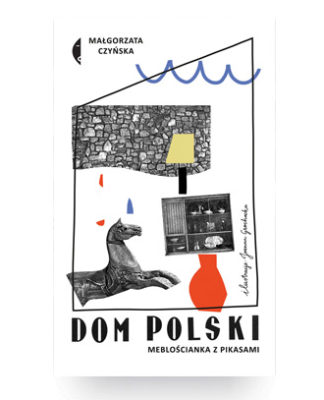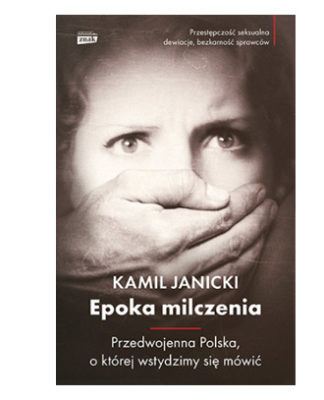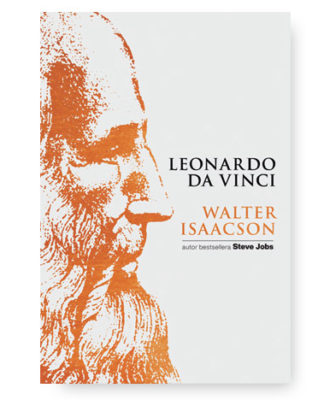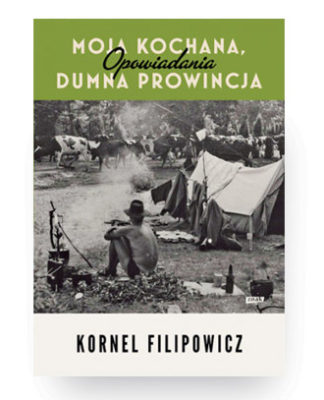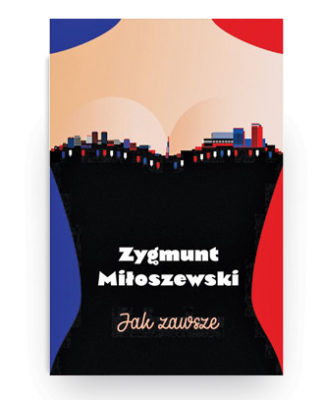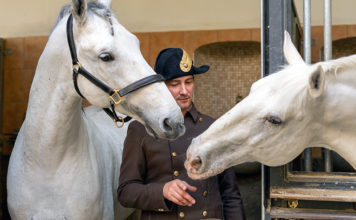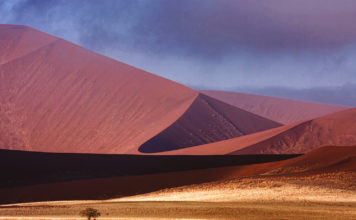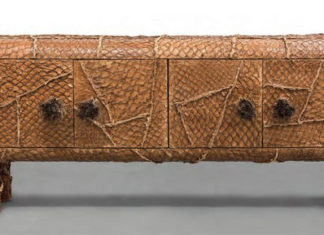Caroline O’Connor in Kiss of the Spider Woman
Photo: Justin Ridler – courtesy of Melbourne Theatre Company
![]()
Kliknij tutaj, aby przeczytać wywiad w wersji polskiej.
Caroline O’Connor is the only person to perform the role of Velma Kelly in Chicago on three continents and has conquered Broadway, New York’s Birdland, London’s West End, Paris at Theatre du Châtelet and Australia. We talk to the legendary musical theatre star in Melbourne, following a performance of the musical Kiss of the Spider Woman by John Kander and Fred Ebb, the writers of Cabaret and Chicago.
Text: Jansson J. Antmann
You’ve performed all around the world. What is it like to go from theatre to theatre and continent
to continent?
They’re all black boxes. Of course, it’s different from the audience’s perspective, but I turn up to the stage door and go backstage, which is often grotty – although some are glamorous – and then I enter this black box which is filled with stage magic – lights, costumes and scenery – and we create our own world. I always find it interesting to go and see a show in a theatre I’ve performed in, and I always find myself thinking: Oh, so this is what it’s like!
Your life has taken you on an extraordinary journey. How do you remember your childhood?
I was born in England – in Oldham, Lancashire to be precise. And I worked there. Believe it or not, I performed in Chicago for the first time when I was really young, although I played Roxie on that occasion. My parents struggled. They’d moved from Ireland to England with my two brothers and one sister. I was born later. They moved to get somewhere. And then this opportunity came along to take the whole family to Australia and they grabbed it. They were ’Ten Pound Poms’, which is the way British citizens who migrated to Australia and New Zealand after the Second World War were known. My father was actually one of 11 children and 5 of his sisters went to Canada. I often wonder what would have happened if we’d moved there. However, they decided to move to Adelaide instead. Australia was wonderful to us and both my parents loved it here. What an incredible life we’ve had!
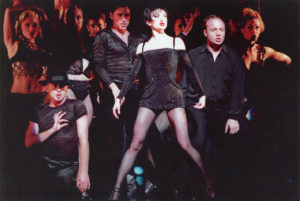
Caroline O’Connor in Chicago
How did you get into dancing?
I began Irish dancing in Adelaide. My mother loved it and we used to listen to traditional Irish music at home. When I was six years old, I won my first State Championship. The adjudicator told my mother that I really should pursue the gift I had, so she found the best school for Irish dancing, which turned out to be in Sydney, and moved the whole family there! That was the school where I ultimately learned classical ballet, tap and jazz, so I guess it was fate. Later I became part of the Australian Irish Dancing World Championship Team and I was ranked 3rd in the world when I was 15.
Why didn’t you pursue it?
I returned to London when I was 17 to study at the Royal Ballet School for two years. I thought I was going to be a ballet dancer. I got to see the best of the best in the making – Alessandra Ferri and Leanne Benjamin. I remember my mother begged me not give up Irish dancing, but I did. And look what happened! Years later, Michael Flatley made a fortune with Riverdance and the shows that followed! Of course, my mother told me: I told you so.
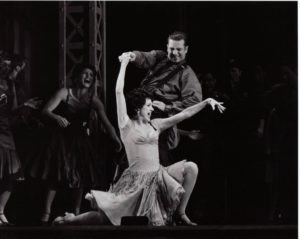
Caroline O’Connor in West Side Story
What happened after that?
I returned to Australia after three years and went back to dancing school. Lois Strike taught there. She was from the Australian ballet and also danced with the Australian Opera. She asked me if I’d like to perform in Smetana’s The Bartered Bride, because one of the girls had been injured and they needed someone for the maypole dance. It turned out to be my first job, paid in cash as it was in those days. I was a dancer with the ballet troupe of the Australian Opera … at the Sydney Opera House. Imagine that! My first job was in that incredible building! After that I also danced in Die Fledermaus starring Dame Joan Sutherland. I remember queuing up with her at the canteen and being so overwhelmed by her stature. She had the aura of a superstar about her, so that was thrilling.
You went back to London after that, didn’t you?
Yes, when I was 22. I started working in shows there and ended up staying for 14 years, before returning to Australia to perform Anita in West Side Story. When I first arrived in London, I’d go for walks and look at all those marvellous theatres lit up along Shaftsbury Avenue, with the crowds going in to see shows. I used to wonder what it must be like. Now, all these years later, I’ve played in some 8 theatres in the West End and I can honestly say it was everything I ever dreamt it could be. That incredible artistic atmosphere and a sense of making people happy. Living in that world of entertainment is a wonderful life.
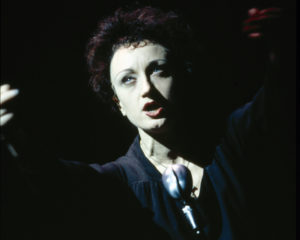
Caroline O’Connor in the role of Edith Piaf
How did that come about?
Would you believe that the choreographer Gillian Lynne gave me my first job in London? As soon as I got there, I went to Pineapple Studios, because that’s what you did back then. It’s where you networked and heard the gossip about what jobs were coming up. And because I’d had a couple of shows under my belt, I thought I’d be brave and approach the agent there and he took me on. My first audition was for the film National Lampoon’s European Vacation starring Chevy Chase. It features a nightclub scene, which Gillian was choreographing, and I got the part. I remember thinking: Wow! Gillian Lynne just gave me a job!
It’s incredible to think what a career she had, from the Royal Ballet to The Muppet Show, and choreographing iconic musicals like CATS for Trevor Nunn and The Phantom of the Opera for Hal Prince. Did you work with her again?
I did. After I’d done the film with her, I got a part in Mike Ockrent’s landmark production of Me and My Girl in 1984, starring Emma Thompson, whom I understudied, and Robert Lindsay. After that I auditioned for Cabaret, which Gillian was directing and choreographing, and starred the legendary dancer Wayne Sleep from the Royal Ballet, who’d also been in the original London production of CATS. I was one of the Kit Kat Girls and understudied Sally Bowles. I was always an understudy in those days and I went on quite a lot in the main role. It was lovely to work with Wayne and we were reunited this year for the tribute gala To Gillie with Love after she passed away. He sang Willkommen and then introduced me to sing Maybe This Time. Gillian’s husband Peter Land had asked me if I’d do it and I said: Oh my God! Of course, what an honour! I also sang A House is not a Home, because I’d done a television special of Burt Bacharach’s music for Gillian titled The Look of Love. It also starred Ute Lemper and Juliet Prowse – so many incredible people worked on that.
Legends!
Precisely. Juliet was the calmest person I’ve ever met. She’d sit through rehearsals watching what was going on and picked it up just like that. The amazing thing was that she sat there knitting – cool as a cucumber … knitting!
What do you remember about Gillian Lynne?
She was strict. I adored her strictness. She would drill the way the Americans do, again and again, until the routine got into your body. Once it’s in your body, you can really enjoy it. And she’d always go overtime. Rules meant nothing to Gillian. You’d be looking at your watch thinking, ‘it’s lunchtime … we’re all exhausted’, but she’d work and work and work… I’d never seen anything like it.
Has that stayed with you to this day?
Absolutely! That discipline … her work ethic.
With such a strong dance background, when did you realise you could sing?
I used to love listening to all those great singers in my parents’ vinyl collection and I tried to mimic them. I never wanted to be an impersonator, but I was fascinated by their distinct voices and personalities. I would record myself singing along to them.
Was Judy Garland one of them?
Absolutely! Judy Garland has been a part of my life for a while.
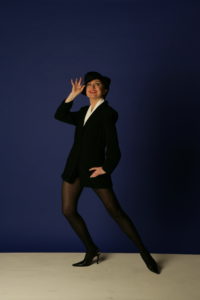
Caroline O’Connor
You starred in End of the Rainbow, which the film Judy is based on.
I never wanted to do that show, because she was a goddess – the greatest! She had an incredible connection with her audience, coupled with extraordinary vulnerability and the need to be loved. The audience could feel that, and they knew that they were getting everything she could possibly give them. Therefore, when they first offered me the show, I turned it down. I didn’t want that responsibility. On top of that, it was a very sad piece about the end of her life and her last days in London. However, they eventually persuaded me, and I knew I’d be in safe hands working with the director Wayne Harrison. We had a great success with it in Sydney, so we took it to the Edinburgh Festival and won The Stage Award for best actress.
Did it travel any further?
Not with me. I didn’t do it in London or on Broadway. I wanted to let go of the character at that stage. She was starting to invade my life. My husband used to say: I don’t want to live with Judy Garland. Please leave her at the theatre. However, I did end up playing her again in Melbourne, when I performed in the musical The Boy from Oz. That was more enjoyable. It was a happier period in her life when she met Peter Allen.
Yet the Great White Way beckoned.
I’ve done three shows on Broadway. Chicago was my big break. I ended up performing in the role of Velma Kelly alongside Charlotte d’Amboise and Billy Zane. He was such a wonderful actor … great voice and so handsome. The producers invited me after I’d done the show in Australia and I’d just been in Baz Luhrmann’s Moulin Rouge, so I think that may have had something to do with it.
What did it feel like to make your Broadway debut?
I remember being absolutely terrified. My knees were knocking together. I’d barely had a week of rehearsals, since they assumed I knew the part after performing in Australia. I knew that I just had to come down those stairs and make my entrance for the opening number, All That Jazz. If I could do that, I’d be fine for the rest of the show.
You’ve been fine on three continents!
Yes, in Australia in 1998 and again 11 years later, on Broadway in 2002 and in Lebanon, but it was a different production there. I also did the 10th Anniversary celebration in London, so in a way it’s been four continents.
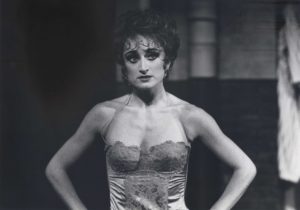
Caroline O’Connor in Damn Yankees
More shows followed on Broadway. Why is it so special?
I performed in A Christmas Story and Anastasia. Broadway creates the best musical theatre. It’s an industry. They’re constantly developing new shows. Creating new characters to be replicated by other people around the world is thrilling. To create shows with the composers in the room and be able to try out different ideas with them is so exciting.
You’ve even performed for one of Broadway’s greatest composers, Stephen Sondheim!
Yes, I did Sweeney Todd at the Théâtre du Châtelet in Paris and he was there.
Sondheim went on the record to say how much he loved your performance in the role of Mrs Lovett.
Well, that’s what I read in Le Monde. I know he was there at the opening and he’d been very complimentary to all of us during dress rehearsals. I do remember that we were having photos taken together and Sondheim asked me if I spoke French, which I don’t. I asked him why and he said he wished I could tell them to stop taking photos. (laughs) I saw him again when I did Follies in Chicago and he was very complimentary on that occasion too. I value that, because he’s a musical genius and a brilliant lyricist, but at the same time he’s a man of few words. I must admit I did feel quite nervous around him.
Did he recommend you to director Hal Prince?
Yes, he did. Hal Prince called me at my house, quite out of the blue, and told me that Stephen Sondheim had told him to get in touch with me after he’d seen me in Paris. I was completely flabbergasted! I couldn’t believe what was happening. I even remember asking him to hold on for a second while I tried to catch my breath… and there he was giggling and laughing on the other end of the line.
So, did you work with him?
I worked on a workshop of Prince of Broadway, which was a tribute show about him and comprised scenes recreated from his original productions like Fiddler on the Roof, Cabaret, Evita and The Phantom
of the Opera. Prince had originally created it in Japan, but Susan Stroman was staging it in New York. Nevertheless, he was in the room and he couldn’t help himself. He was up on his feet all the time and coming over to talk to us. You know, he was a director through and through. And he had a very clear vision of how something was supposed to look. Once he achieved it, it became his favourite version. I remember I had to sing If you could see her through my eyes from Kander and Ebb’s Cabaret, and I loved the staging. I started out wearing a gorilla suit, but then I took it off and sang So What, which had been performed in the original production by Kurt Weil’s wife. It was very clever and very moving, and Hal came up to me and simply said: I want you to just bring Lotte Lenya back.
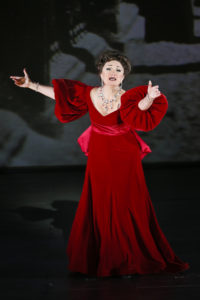
Caroline O’Connor in Kiss of the Spider Woman (photo: Jeff Busby)
The works of Kander and Ebb have played a big part in your career. The role of Aurora in Kiss of the Spider Woman sounds as if it were tailor-made for you.
I’m very grateful to them. They were an incredible writing team with the incredible ability to present dark subject matter in a way that provoked you to think about the issues, while still allowing you to leave the theatre entertained. I mean their treatment of the rise of Nazism in Cabaret; the links between crime and celebrity in Chicago; and the torture and execution of political prisoners and minorities in Kiss of the Spider Woman are all classic examples.
You’re not letting go of them, are you?
No, I’m not. In fact, I’m about to fly to Chicago to perform Everybody’s Girl from their musical Steel Pier. It’s going to be a walk-around song at the Spiegeltent. This time last year, I thought I was going to back away from musical theatre and focus on acting in plays. Look at me now! I can’t wait to do a bit of burlesque. |

Blinis
I love blinis. Sometimes, when I’m home drinking champagne with my husband Barrie, I make blinis with smoked salmon, cream cheese or crème fraîche, dill and caviar. Yum!




 Współczesne dramaty
Współczesne dramaty Present-day dramas
Present-day dramas




